Ilenia Tinnirello
The Text Classification Pipeline: Starting Shallow going Deeper
Dec 30, 2024



Abstract:Text Classification (TC) stands as a cornerstone within the realm of Natural Language Processing (NLP), particularly when viewed through the lens of computer science and engineering. The past decade has seen deep learning revolutionize TC, propelling advancements in text retrieval, categorization, information extraction, and summarization. The scholarly literature is rich with datasets, models, and evaluation criteria, with English being the predominant language of focus, despite studies involving Arabic, Chinese, Hindi, and others. The efficacy of TC models relies heavily on their ability to capture intricate textual relationships and nonlinear correlations, necessitating a comprehensive examination of the entire TC pipeline. This monograph provides an in-depth exploration of the TC pipeline, with a particular emphasis on evaluating the impact of each component on the overall performance of TC models. The pipeline includes state-of-the-art datasets, text preprocessing techniques, text representation methods, classification models, evaluation metrics, current results and future trends. Each chapter meticulously examines these stages, presenting technical innovations and significant recent findings. The work critically assesses various classification strategies, offering comparative analyses, examples, case studies, and experimental evaluations. These contributions extend beyond a typical survey, providing a detailed and insightful exploration of TC.
A CSI Dataset for Wireless Human Sensing on 80 MHz Wi-Fi Channels
Apr 29, 2023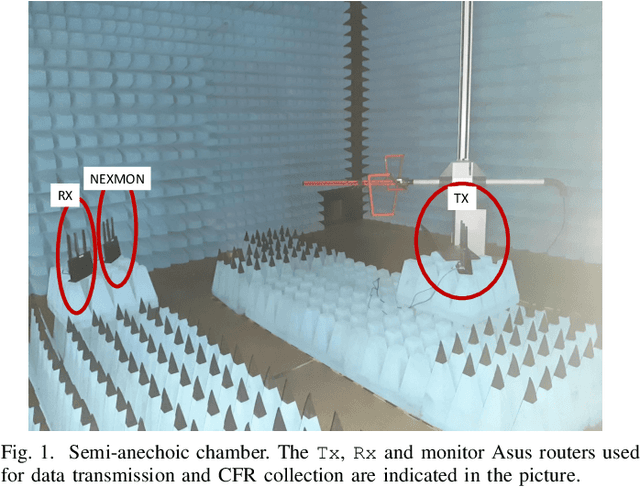
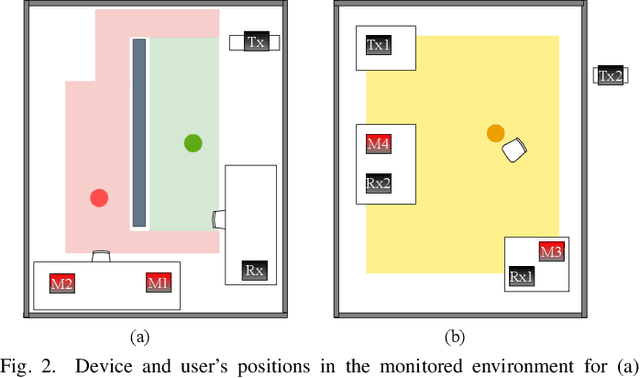
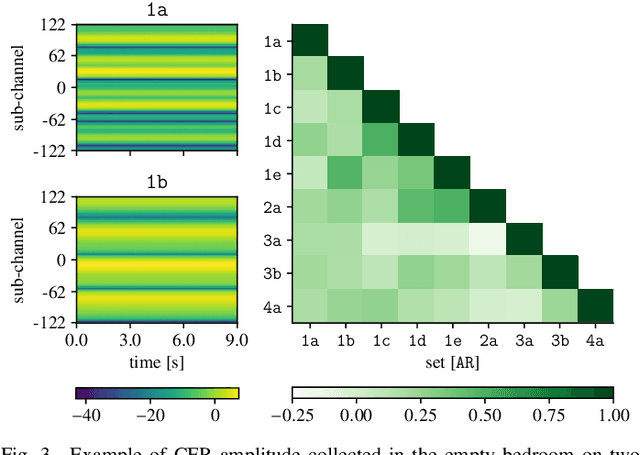

Abstract:In the last years, several machine learning-based techniques have been proposed to monitor human movements from Wi-Fi channel readings. However, the development of domain-adaptive algorithms that robustly work across different environments is still an open problem, whose solution requires large datasets characterized by strong domain diversity, in terms of environments, persons and Wi-Fi hardware. To date, the few public datasets available are mostly obsolete - as obtained via Wi-Fi devices operating on 20 or 40 MHz bands - and contain little or no domain diversity, thus dramatically limiting the advancements in the design of sensing algorithms. The present contribution aims to fill this gap by providing a dataset of IEEE 802.11ac channel measurements over an 80 MHz bandwidth channel featuring notable domain diversity, through measurement campaigns that involved thirteen subjects across different environments, days, and with different hardware. Novel experimental data is provided by blocking the direct path between the transmitter and the monitor, and collecting measurements in a semi-anechoic chamber (no multi-path fading). Overall, the dataset - available on IEEE DataPort [1] - contains more than thirteen hours of channel state information readings (23.6 GB), allowing researchers to test activity/identity recognition and people counting algorithms.
Environment and Person Independent Activity Recognition with a Commodity IEEE 802.11ac Access Point
Mar 17, 2021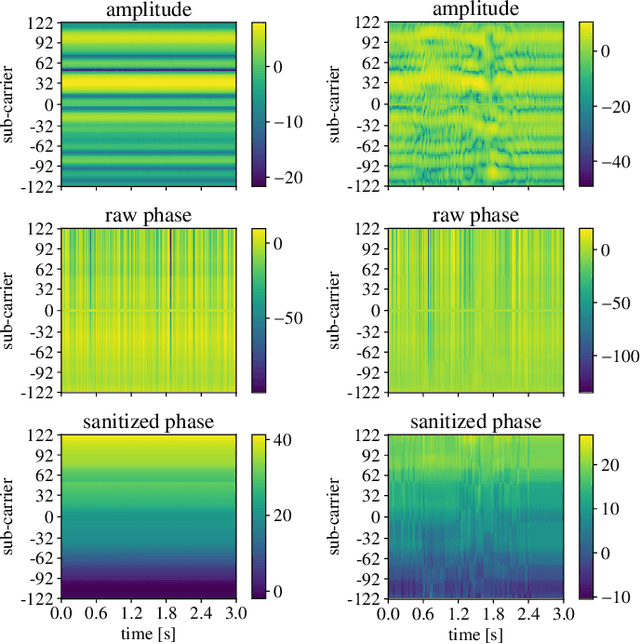
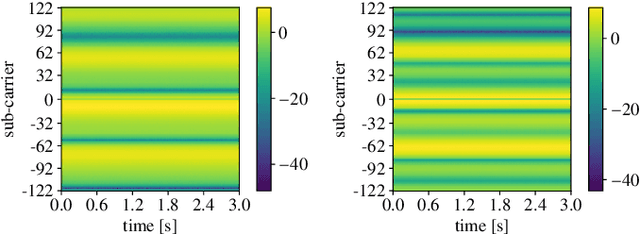

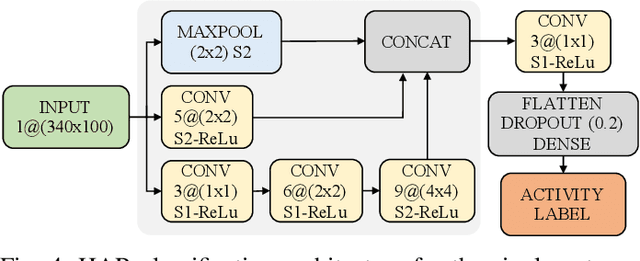
Abstract:Here, we propose an original approach for human activity recognition (HAR) with commercial IEEE 802.11ac (WiFi) devices, which generalizes across different persons, days and environments. To achieve this, we devise a technique to extract, clean and process the received phases from the channel frequency response (CFR) of the WiFi channel, obtaining an estimate of the Doppler shift at the receiver of the communication link. The Doppler shift reveals the presence of moving scatterers in the environment, while not being affected by (environment specific) static objects. The proposed HAR framework is trained on data collected as a person performs four different activities and is tested on unseen setups, to assess its performance as the person, the day and/or the environment change with respect to those considered at training time. In the worst case scenario, the proposed HAR technique reaches an average accuracy higher than 95%, validating the effectiveness of the extracted Doppler information, used in conjunction with a learning algorithm based on a neural network, in recognizing human activities in a subject and environment independent fashion.
ARIANNA: pAth Recognition for Indoor Assisted NavigatioN with Augmented perception
Dec 13, 2013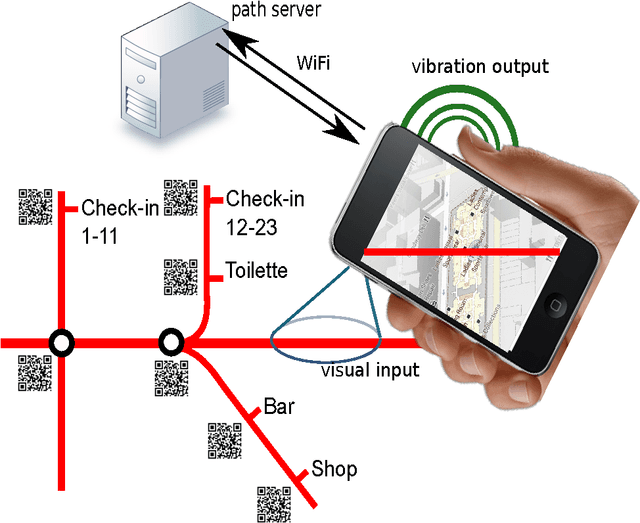
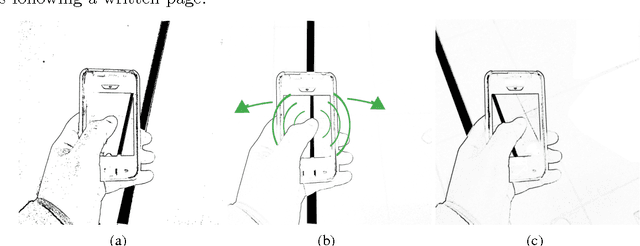

Abstract:ARIANNA stands for pAth Recognition for Indoor Assisted Navigation with Augmented perception. It is a flexible and low cost navigation system for vi- sually impaired people. Arianna permits to navigate colored paths painted or sticked on the floor revealing their directions through vibrational feedback on commercial smartphones.
 Add to Chrome
Add to Chrome Add to Firefox
Add to Firefox Add to Edge
Add to Edge